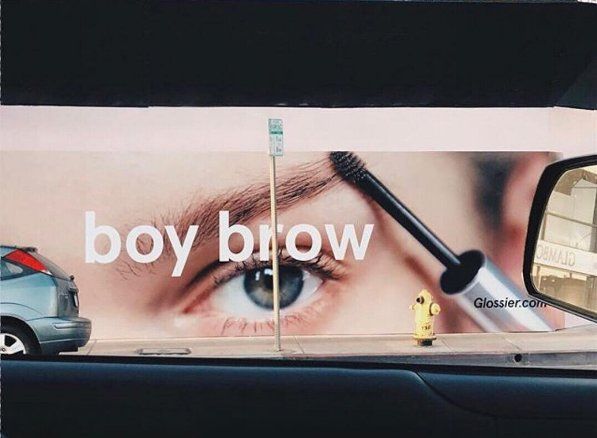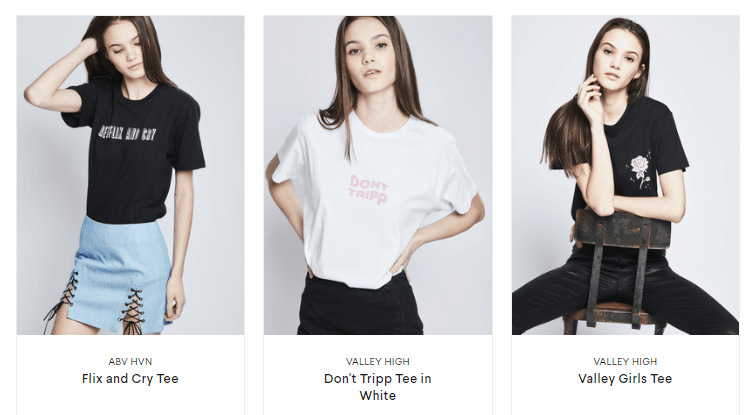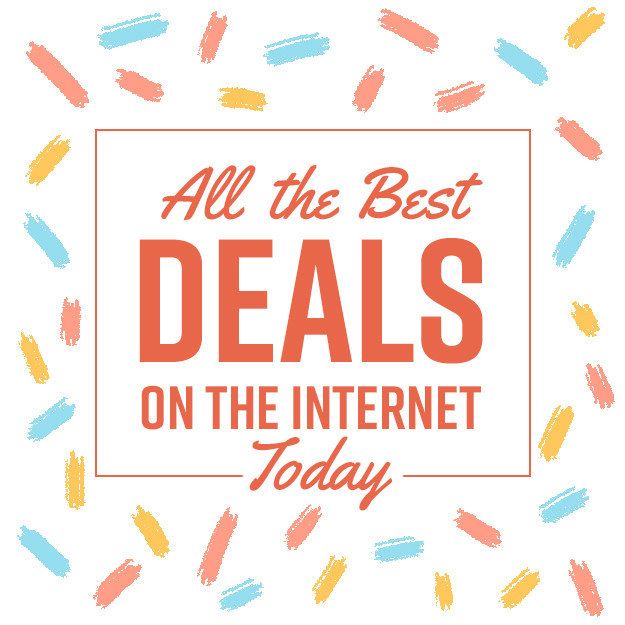Content and the Cult Favorites: How Top Brands Walk the Line Between Editorial and E-Commerce

Take it from the now-bankrupt Nasty Gal: it’s hard to keep up a cool-girl vibe when you’re not pulling in cool-girl amounts of cash. Publishers and retailers have begun to look for alternate sources of revenue, and they’re finding them – in each other. But as distinctions between editorial and retail blur, the situation can get messy for readers and consumers alike. Here’s how three of the coolest brands on the market are walking the line between content and e-commerce.
1) Glossier
via Instagram
If you’re a millennial woman in the U.S., chances are you’ve heard of Glossier. Their ads – splashed all over Facebook, Instagram, and the subway – are instantly recognizable for their iconic pastel pink (so iconic that it has its own branded hashtag) and dewy, fresh-faced models.
But despite their seemingly ubiquitous aesthetic, there was a time when Glossier wasn’t advertising at all – and still managed to become a cult favorite. How? Their blog.
Yep: while most e-commerce brands launch product lines, and then an oft-neglected, possibly-not-even-linked-on-your-homepage side blog, Glossier CEO Emily Weiss did the exact opposite.
She launched Into The Gloss in 2010, four years before Glossier, and the casual editorial voice of the beauty blog took off. ITG is known for its intimate, self-written profiles of everyone from high fashion insiders to women like Adriana Lima and Emma Watson. And the blog’s readers get a chance to join in too by submitting a #ITGTopShelfie on Instagram.
ITG produced the kind of community engagement that had rarely been seen before in the beauty world, and it only made sense to crowdsource input on the eventual Glossier line from those same hyper-engaged readers. The brand’s jump to e-commerce has been a hit (back in 2014, they raised over $10 million in funding) – and they have their original content to thank for it.
“I think it’s easy for e-commerce companies and new brands to think, ‘Okay, let’s start a blog on the side, and we’ll put content on the blog.’ But I think it’s important to think about where people are consuming content right now,” Weiss told FastCompany about the brand’s content-first approach. “I don’t think content equals blog or content equals website. I think content can equal a really incredible Instagram account. Or content can equal an awesome Snapchat game. I think one is not more important than another today.”
2) Nylon
via Nylon Shop
Nylon, the fashion and music magazine that launched in 1999, started out with a sort of “underground” vibe. Their website and social media presence has kept up the edginess in 2017 by tapping into the coolest of the cool: young people.
The financial problem here, of course, is that young people aren’t big spenders, and are very good at publicly hating on obtrusive advertising. So to get around those pesky ad-blockers, Nylon doubled down on native advertising in 2015. And because you can never underestimate the power of an alternative revenue stream, they launched Nylon Shop.
Even a quick glance at the shop’s homepage will tell you: this is not your average online fashion retailer. Nylon Shop sells holographic mermaid shell pasties, a loudly feminist enamel pin (long live 90s grunge), and a soft yellow dress clearly inspired by Beyonce’s life-giving Lemonade look.
The key to Nylon’s e-commerce success has been translating their editorial branch’s deep knowledge of Internet culture into e-commerce products. Digiday wrote in 2015 about their best-selling product at the time: a “In Memory of Zayn” shirt that blew up after Nylon’s e-commerce team noticed the widespread fan freak out about the singer leaving One Direction. Shirts were made and shipped the same day, and sold 54 units in the first hour.
Similar shirts that “riff on Internet culture” are overall the shop’s best-selling products, Nylon’s director of e-commerce told Digiday. “They’re basically memes.”
There’s no easy code to crack to achieve an ideal balance where both editorial and e-commerce can thrive. But Nylon’s success offers two lessons. The first is to sell what you know: few other brands can replicate the success of Nylon’s “meme products”, and that’s because few other brands are as embedded in Internet culture as they are. The second lesson is that your editorial and e-commerce branches have to work with each other. Each has their own specialized knowledge of what “sells” to readers and shoppers – and Nylon is a perfect example of how to capitalize on the overlap.
3) BuzzFeed
via BuzzFeed
Media giant BuzzFeed’s e-commerce efforts have largely focused on affiliate links in its shopping vertical, which features gift guides, quirky product lists, and frequent “best deals on the Internet today” roundups.
The thing about BuzzFeed Shopping is that, like the rest of the site, it targets specific personalities/identities, and it’s incredibly addictive. If there’s any publisher that could make me, someone who sometimes adblocks the life out of a site just out of spite, engage with what is essentially a list of product promotions, it’s BuzzFeed.
The appeal is multi-faceted. Many lists address the shopping pain points many young people have (like, how do you know which dresses on Amazon won’t actually look like garbage bags upon arrival? Or how do you find the few affordable items at trendy stores?)
And then, of course, there’s the Internet appeal: BuzzFeed Shopping can tell you what to get someone who exclusively uses the poop emoji, or what to get that one friend who loves you but hates the world. BuzzFeed has nailed highly shareable editorial content – it follows that they’d nail highly shareable product content in a comparable format as well.
Affiliate links are a common approach for publishers looking to generate additional revenue, but the risk is always that readers feel deceived by an editorial branch profiting from their clicks. BuzzFeed circumvents this with a disclaimer edited for their voice: “We hope you love the products we recommend! Just so you know, BuzzFeed may collect a share of sales from the links on this page.”
That kind of transparency, along with product lists that actively add value to a reader’s experience on the site, is how you sell without being salesy.
In fact, BuzzFeed has had such success with their affiliate link efforts that their Gift Guide email newsletter had a 45% open rate in 2016. Forty-five percent, when the media & publishing industry standard is 22%.
Alongside Glossier, Nylon and BuzzFeed, Condé Nast and Hearst publications have joined the content-commerce integration game as well, to varying degrees of success. The tension between a brand’s editorial integrity and need for revenue will always exist – but by thinking audience-first, encouraging editorial and e-commerce collaboration, and staying true to their voices, these brands are showing us how it’s done.
—
If you’d rather learn about content marketing from the Mad Man himself, check out our post on lessons to learn from Don Draper. And if you’re looking to make your e-commerce business stand out in 2017, we’ve got you covered.



